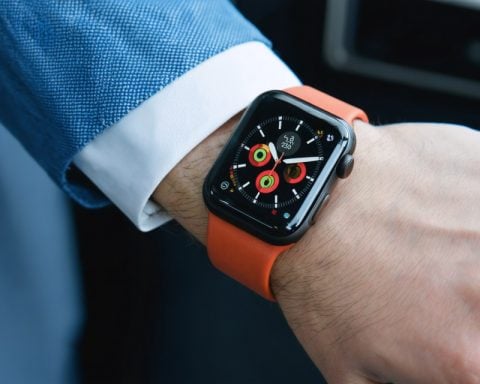- A tragic explosion in a hyperbaric oxygen chamber claimed the life of 5-year-old Thomas Cooper in Troy, Michigan, during treatment for ADHD and sleep apnea.
- Thomas’s mother, Annie, demonstrated immense bravery, attempting to rescue her son despite the danger, resulting in burns and profound grief.
- Hyperbaric oxygen therapy, popular for its healing promises, faces scrutiny as this incident highlights potential risks and insufficient oversight.
- The Oxford Center, where the tragedy occurred, is under investigation for possible understaffing and inadequate emergency protocols.
- The incident calls for a critical review of safety regulations and protocols in alternative medical treatments.
- The community supports the Cooper family, while initiating vital discussions on the balance between healthcare innovation and safety.
Tragedy struck on a typically quiet afternoon in Troy, Michigan, transforming a family’s quest for healing into an unimaginable nightmare. A 5-year-old boy, Thomas Cooper, became a casualty of a hyperbaric oxygen chamber explosion, leaving a community in shock and a family in grief.
Thomas was receiving treatment for ADHD and sleep apnea when his mother, Annie Cooper, horrifically witnessed the chamber erupt in flames. Instinctively, she lunged into the inferno, desperate to save her son, braving the relentless heat and suffocating smoke. Her courage knew no bounds, but despite her fiery resolve, she emerged with painful burns and the crushing weight of loss.
This incident paints a stark image of danger in what many perceive as a haven of healing. Hyperbaric oxygen therapy, known for reducing inflammation and promoting healing, has surged in popularity, promising relief where conventional medicine has failed. Yet, the tragic death of young Thomas sheds blinding light on the lurking risks and gaps in oversight.
Questions now hang heavy in the air at The Oxford Center, where the blast occurred. Allegations emerge of understaffing and inadequate emergency protocols, pointed out by the family’s attorney, who plans to take legal action. As the Michigan State Police delve into a full investigation, the narrative of hope intertwined with tragedy continues.
This heart-wrenching story echoes a powerful caution: not all that glitters with healing promises is without peril. Families, driven by the love and desperation to ease their loved ones’ struggles, may unwittingly tread into dangerous territory. It is imperative to scrutinize, question, and verify before venturing into alternative therapies that claim miraculous outcomes.
As the community rallies around the Coopers, supporting them in profound grief, an urgent conversation begins about the safety and regulation of alternative medical treatments, urging us to tread carefully where science and promise meet.
Protect Your Loved Ones: What You Need to Know About Hyperbaric Oxygen Therapy Safety
Understanding Hyperbaric Oxygen Therapy (HBOT)
Hyperbaric Oxygen Therapy involves breathing pure oxygen in a pressurized chamber, aimed at enhancing the body’s natural healing processes. Originally used for treating decompression sickness in scuba divers, it has gained popularity for a wide range of conditions, such as wound healing, carbon monoxide poisoning, and off-label uses like ADHD and sleep apnea.
How-To Steps & Life Hacks
1. Research Thoroughly: Before opting for HBOT, consult with a medical professional to ensure it’s appropriate for the specific condition. Consider getting a second opinion.
2. Verify Credentials: Ensure the facility and its staff are certified and experienced. Contact health authorities and check for any history of incidents at the center.
3. Understand the Risks: Familiarize yourself with potential risks including fire hazards, which can occur due to the high oxygen environment. Find out what safety protocols are in place.
4. Prepare for the Session: Wear non-flammable clothes, and follow all preparatory instructions by the facility to mitigate risks.
Real-World Use Cases
While research supports HBOT for certain conditions, its effectiveness for ADHD and sleep apnea remains controversial. Studies such as those published in the Journal of the Undersea and Hyperbaric Medical Society indicate limited evidence for its efficacy in non-traditional uses, highlighting the need for more rigorous clinical trials.
Reviews & Comparisons
Consumers often compare HBOT with other alternative therapies such as acupuncture or chiropractic treatments for chronic conditions. Reviews from users can be mixed, with some reporting significant improvements and others seeing little to no benefit. Check platforms like Trustpilot and health forums to gather unbiased opinions.
Controversies & Limitations
– Lack of Regulation: The HBOT industry lacks stringent regulation, which can lead to unfortunate incidents like the one involving Thomas Cooper. Facilities can vary greatly in terms of safety and quality.
– Insurance Coverage: HBOT is often not covered by insurance for off-label uses, resulting in high out-of-pocket costs.
Features, Specs & Pricing
– Chamber Types: HBOT chambers can be monoplace (for one person) or multiplace (for several people). Both have their own safety standards and pricing models, from $200 to $500 per session.
– Facility Accreditation: Look for accreditation from bodies like the Undersea and Hyperbaric Medical Society (UHMS) as a mark of quality and safety.
Security & Sustainability
The potential fire hazard of HBOT emphasizes the need for robust security measures. Sustainable practices in the industry are still evolving, focusing on better training protocols and emergency preparedness.
Insights & Predictions
With growing interest in holistic treatments, HBOT’s market is expected to increase. However, safety concerns and regulatory scrutiny may lead to more stringent safety protocols and insurance interventions.
Pros & Cons Overview
Pros:
– May aid in faster recovery for certain conditions.
– Non-invasive and generally safe when conducted properly.
Cons:
– High costs and limited insurance coverage.
– Variable effectiveness for conditions not officially approved.
Actionable Recommendations
– Always initiate discussions with healthcare providers regarding the necessity and safety of HBOT.
– Ensure you are fully aware of the operation details and preparedness of the facility to handle emergencies.
– Document your sessions and report any concerns to healthcare authorities.
Related Links
For more information about hyperbaric oxygen therapy and facility accreditation, visit the following:
– Undersea and Hyperbaric Medical Society (UHMS)
– U.S. Food & Drug Administration (FDA)
This essential knowledge underscores the importance of balancing hope with caution, ensuring safety, and verifying the claims of alternative treatments. As tragic as Thomas Cooper’s story is, it serves as a reminder to prioritize safety and make informed choices for the well-being of loved ones.



















